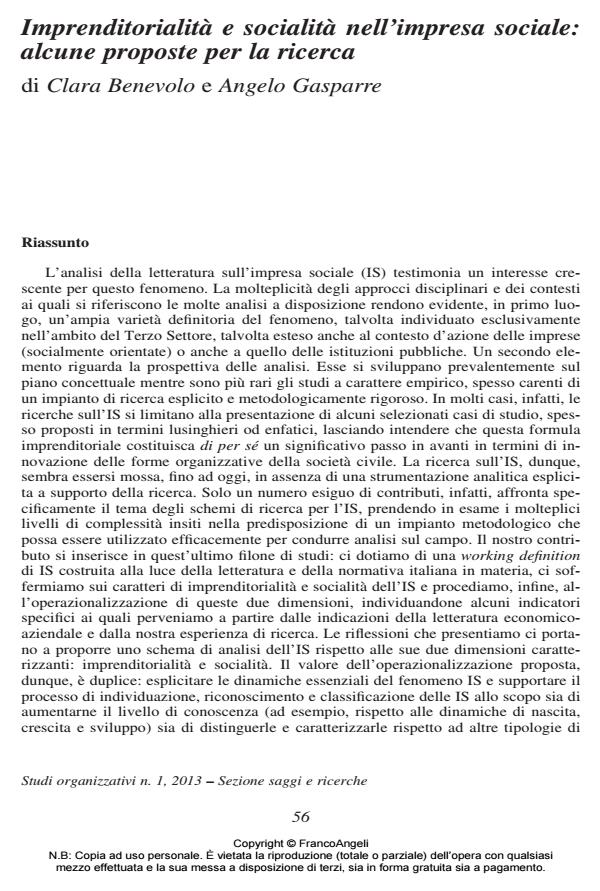Entrepreneurship and sociality in social enterprise: some suggestions for research
Journal title STUDI ORGANIZZATIVI
Author/s Clara Benevolo, Angelo Gasparre
Publishing Year 2013 Issue 2013/1
Language Italian Pages 31 P. 56-86 File size 552 KB
DOI 10.3280/SO2013-001003
DOI is like a bar code for intellectual property: to have more infomation
click here
Below, you can see the article first page
If you want to buy this article in PDF format, you can do it, following the instructions to buy download credits

FrancoAngeli is member of Publishers International Linking Association, Inc (PILA), a not-for-profit association which run the CrossRef service enabling links to and from online scholarly content.
In this article we aim to elaborate and discuss the nature and characters of social enterprise (SE) in its two essential dimensions: entrepreneurship and sociality. Scholars of many disciplines at both national and international levels, in fact, have been nurturing an increasing interest to SE. Research, however, mainly concentrates on the conceptual level - the nature of SE, the many definitions, etc. - while in empirical works a lack of rigorous methodology has been highlighted for many studies, which are often limited to the presentation of selected case studies, whereas SEs are frequently described in laudatory terms, suggesting the idea that this organizational form is intrinsically innovative and socially sounding. Therefore, despite the richness of both analytical and research works on SE, the debate is clearly demanding analytical frameworks that could support rigorous research projects targeted to both quantitative and qualitative analysis of the phenomenon. After a brief presentation of some of the most important works on SE we will outline and discuss a working definition of SE that captures the essence of either national and international literature and Italian regulatory framework on the phenomenon. Its operationalization will lead to the presentation of some specific suggestion for carrying out both quantitative and qualitative research on SE. To this end two different categories of variables will be outlined: those referring to the entrepreneurship side of SE and those referring to its social aspects. Both for entrepreneurship and social variables specific measurement tools are indicated.
Keywords: Social enterprise, nonprofit, social cooperatives, sociality, research frameworks.
Clara Benevolo, Angelo Gasparre, Imprenditorialità e socialità nell’impresa sociale: alcune proposte per la ricerca in "STUDI ORGANIZZATIVI " 1/2013, pp 56-86, DOI: 10.3280/SO2013-001003